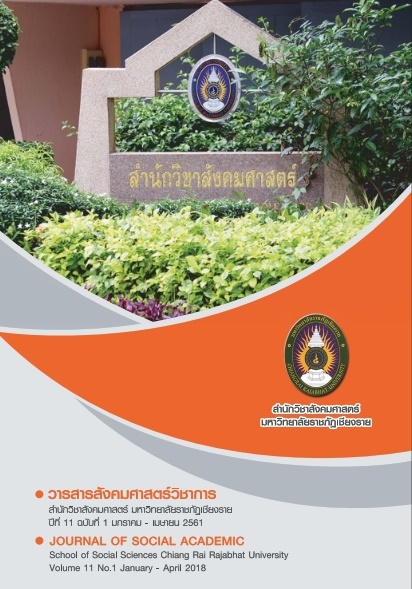ปัจจัยเชิงสาเหตุที่นำไปสู่ผลการดำเนินงานด้านความปลอดภัยขององค์กรในประเทศไทย กรณีศึกษา: ผู้ปฏิบัติงานในเขตพื้นที่การบินของสนามบิน
Main Article Content
บทคัดย่อ
การวิจัยครั้งนี้มีวัตถุประสงค์ เพื่อพัฒนาตัวแบบปัจจัยเชิงสาเหตุที่นำไปสู่ผลการดำเนินงานด้านความปลอดภัยขององค์กรในประเทศไทย กรณีศึกษา: ผู้ปฏิบัติงานในเขตพื้นที่การบินของสนามบินในประเทศไทย โดยศึกษา (1) ความสัมพันธ์ระหว่างระบบการจัดการความปลอดภัยกับวัฒนธรรมความปลอดภัยเชิงบวกและบรรยากาศองค์กรที่มีความปลอดภัย (2) อิทธิพลระหว่างผลการดำเนินงานด้านความปลอดภัยกับพฤติกรรมความปลอดภัย พฤติกรรมความปลอดภัยกับบรรยากาศที่มีความปลอดภัย และ(3) ผลการดำเนินงานด้านความปลอดภัยกับระบบการจัดการความปลอดภัย ผู้วิจัยกำหนดประชากรในการวิจัยครั้งนี้ คือ พนักงานขององค์กรที่ปฏิบัติงานภายในเขตการบินของสนามบินในประเทศไทยภายใต้การกำกับดูแลของ บริษัท ท่าอากาศยานไทย จำกัด (มหาชน) ซึ่งมีจำนวนพนักงานรวมกัน 61,482 คน ทำการสุ่มตัวอย่างพนักงานจากองค์กรดังกล่าวจำนวน 440 คน ด้วยวิธีการสุ่มตัวอย่างแบบหลายขั้นตอน ดำเนินการเก็บรวบรวมข้อมูลด้วยแบบสอบถามระหว่างเดือน กุมภาพันธ์ ถึง เมษายน พ.ศ. 2557 และได้รับแบบสอบถามกลับคืนมาจำนวน 414 ฉบับ คิดเป็นอัตราการตอบกลับคืนร้อยละ 94 ผู้วิจัยวิเคราะห์ข้อมูลโดยใช้วิธีการทางสถิติที่เรียกว่า การวิเคราะห์ตัวแบบสมการโครงสร้าง
ผลการวิจัย พบว่า ระบบการจัดการความปลอดภัยและวัฒนธรรมความปลอดภัยเชิงบวกมีอิทธิพลทางตรงเชิงบวกกับบรรยากาศที่มีความปลอดภัย บรรยากาศที่มีความปลอดภัยมีอิทธิพลทางตรงเชิงบวกกับพฤติกรรมความปลอดภัย พฤติกรรมความปลอดภัยมีอิทธิพลทางตรงเชิงบวกกับผลการปฏิบัติงานด้านความปลอดภัยขององค์กร และพบว่า ระบบการจัดการความปลอดภัยและวัฒนธรรมความปลอดภัยเชิงบวกมีอิทธิพลทางอ้อมเชิงบวกกับพฤติกรรมความปลอดภัยและผลการดำเนินงานด้านความปลอดภัยขององค์กร และบรรยากาศที่มีความปลอดภัยมีอิทธิพลทางอ้อมเชิงบวกกับผลการปฏิบัติงานด้านความปลอดภัยขององค์กรที่ปฏิบัติงานอยู่ในเขตการบิน
Article Details
รายละเอียดของลิขสิทธ์
References
Chenhall, R. H., & Langfield-Smith, K. (2003). Performance Measurement and Reward Systems, Trust, and Strategic Change. Journal of Management Accounting Research, 15, pp. 117-143.
Devinney, T. M., Richard, P. J., Yip, G. S., & Johnson, G. (2005). Measuring Organizational Performance in Management Research: A Synthesis of Measurement Challenges and Approaches: SSRN.
FAA. (2007). Operator’s Manual Human Factors in Airport Operations, Federal Aviation Administration.
Flin, R., Mearns, K., O’Connor, P., & Bryden, R. (2000). Measuring safety climate: Identifyingthe common features. Safety Science, 34, 177-192.
Graham Hubbard. (2006). Measuring Organizational Performance: Beyond the Triple Bottom Line Business Strategy and the Environment Bus. Strat. Env. 18, 177–191 (2009).
Hudson. (2007). Implementing a safety culture in a major multi-national. Safety Science, 45,697-722.
ICAO. (2013). Doc 9859 AN /474 Safety Management Manual SMM: Thirds Edition.International Civil Aviation Organization.
McNeely, Steven C.(2012) Examining the Relationship between Organizational Safety Culture and Safety management system implementation in Aviation; ProQuest Dissertations and Theses; 2012; ProQuest Dissertations & Theses Full Text.
Michael E. Hall et.al .(2013). Development of a Theory-Based Safety Climate Instrument. Journal of Safety, Health & Environmental Research, Vol 8, No. 3 (2013).
O’Connor Paul et.al (2011) Measuring safety climate in the aviation industry: A review safety science 49, 128-138 ,2011.
Pourdehnad, John and Peter A.C. Smith. (2012). "Sustainability, organizational learning, and lessons learned from aviation", The Learning Organization, Vol. 19 Iss: 1, pp.77 – 86.
P.M.Salmon et.al. (2010).“Managing error on the open road: The contribution of human error models and methods”. Safety Science, 48, pp. 1225 – 1253.
Rampsey, P. (2008). Learning and performance: Rethinking the dance. In P. Kumar & P. Ramsey (Eds.), Learning and performance matter (pp. 3-16). Singapore: World Scientific.
Reason. (1990). “Human Error”.Cambridge University Press.
Reason. (1997). “Managing the Risk of Organizational Accidents”. Ashgate Publishing Limited
Rebort B.Carton. (2004). “ Measuring Organizational Performance: An Exploratory study ” Dissertation Submitted to the Graduate Faculty of The University of Georgia.
S.C. Payne et al. (2009). Safety climate: Leading or lagging indicator of safety outcomes, Journal of Loss Prevention in the Process Industries 22 (2009) 735–739.
Shappell Scott A. ,Douglas A.Wiegmann. (2006). Human Error and Commercial Aviation Accidents:
A comprehensive,Fine-Grained Analysis Using HFACS ; DOT/FAA/AM-06/18 office of Aviation Medicine Washington, DC 20591.
Stolzer A.J et.al. (2011). “ Implementing Safety Management System in Avaiton”; Ashgate Publishing Limited.
Van Dyck et.al. (2005). Organizational Error Management Culture and Its Impact on Performance: A Two-Study Replication, Journal of Applied Psychology 2005, Vol. 90, No. 6, 1228–1240.
Venkatraman, N., & Ramanujam, V. (1986). Measurement of Business Performance in Strategy Research: A Comparison of Approaches. Academy of Management Review, 11, pp. 801-814.
Wiegmann, D. A., & Shappell, S. A. (2003). A human error approach to aviation accident analysis: The human factors analysis and classification system. Burlington,VT: Ashgate Publishing, Ltd.

